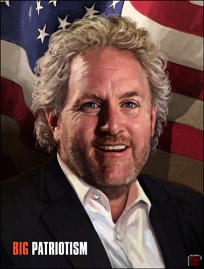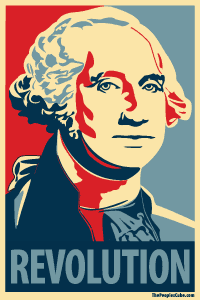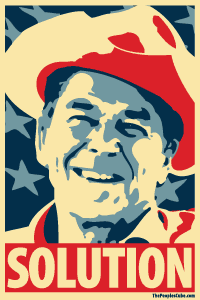By Tiffany Gabbay | May 1, 2012 | The Blaze
- On April 27, The Tribeca Film Festival (TFF) hosted its third annual Disruptive Innovation Awards. Honorees included Dr. Steven Curley of the Kanzius Cancer Research Foundation and Twitter Co-founder Jack Dorsey
- The theory of Disruptive Innovation dictates that new applications or utilities to existing products or services will impact — in fact alter — the marketplace in measurable ways
- TFF Co-founder, Craig Hatkoff, along with others believe that political polarization in America can be mitigated by applying the techniques of Disruptive Innovation, especially through engaging in dialogues with social icons like Glenn Beck
- Further, famed economist Adam Smith’s “The Theory of Moral Sentiments” is weighed against Disruptive Innovation as a means to create a just, Capitalist society
Most people think of innovation in terms of technological, rather than social or political applications, but recent insight gleaned from the Tribeca Film Festival’s (TFF) Disruptive Innovation Awards, held Friday, April 27, may shatter that preconception. What’s more, that very insight may be best illustrated through an ongoing dialogue with Glenn Beck and one of the film festival’s founders. Intrigued? For reference, first consider the following information on the theory of disruptive innovation.
The theory of Disruptive Innovation
 Coined by Harvard Professor Clayton Christensen, author of The Innovator’s Dilemma, the term “disruptive innovation” is perhaps not common in modern day vernacular, but it is something you have experienced before and likely will again throughout all stages of life. Counterintuitively, disruptive innovations do not necessarily find origin in a specific “invention,” rather they foster a different utility for a pre-existing product, service or technology, effectively creating an opportunity for great change that leads to a brand new market. Ultimately, the innovation “disrupts” the status-quo, transforming modern-day life.
Coined by Harvard Professor Clayton Christensen, author of The Innovator’s Dilemma, the term “disruptive innovation” is perhaps not common in modern day vernacular, but it is something you have experienced before and likely will again throughout all stages of life. Counterintuitively, disruptive innovations do not necessarily find origin in a specific “invention,” rather they foster a different utility for a pre-existing product, service or technology, effectively creating an opportunity for great change that leads to a brand new market. Ultimately, the innovation “disrupts” the status-quo, transforming modern-day life.
The automobile has often been cited as an example of a disruptive innovation. Although a ground-breaking technological invention at the time, its high initial cost prohibited the product from penetrating daily life and commerce. It was not until Ford motor company introduced its affordable Model T in the early 20th century that the market for horse-drawn carriages was “disrupted” with the widespread adoption of motor vehicles. The automobile itself is a technological innovation, while Ford’s system of mass-producing cost-efficient cars from which the masses could benefit, is a disruptive one. Other examples include the iPod, which disrupted the CD market, and Wikipedia, which disrupted the market of traditional encyclopedic volumes such as the Britannica series.
The Tribeca Film Festival’s Disruptive Innovation Awards
For the last three years, under the stewardship of TFF co-founder, Craig Hatkoff, the Disruptive Innovation Awards have recognized companies and individuals who have distinguished themselves by successfully disrupting markets to effect change in the worlds of business, technology, social justice and the arts. The honorees represented a broad spectrum of innovators from Twitter co-founder Jack Dorsey to members of DARPA. Notably, one of this year’s honorees was Dr. Steven Curley who has carried on the late John Kanzius’ pioneering medical research in the use of high frequency radio waves to kill cancer cells. You might recall The Blaze and Glenn Beck’s extensive coverage of the Kanzius Cancer Research Foundation, as well as Beck’s involvement in bringing much needed awareness to the project.
the Disruptive Innovation Awards have recognized companies and individuals who have distinguished themselves by successfully disrupting markets to effect change in the worlds of business, technology, social justice and the arts. The honorees represented a broad spectrum of innovators from Twitter co-founder Jack Dorsey to members of DARPA. Notably, one of this year’s honorees was Dr. Steven Curley who has carried on the late John Kanzius’ pioneering medical research in the use of high frequency radio waves to kill cancer cells. You might recall The Blaze and Glenn Beck’s extensive coverage of the Kanzius Cancer Research Foundation, as well as Beck’s involvement in bringing much needed awareness to the project.
While this year’s honorees and the fields they represented made sense from an innovation-standpoint, one of the key questions that emerged is how can the theory of disruptive innovation address the political polarization occurring in modern-day America. It may seem an impossible feat, but Hatkoff, along with Rabi Irwin Cula of the National Jewish Center for Leadership and Learning (CLAL), and The Economist’s Matthew Bishop, led a discussion on this very subject.
Adam Smith’s The Theory of Moral Sentiments” and how it relates to capitalism
Invoking economist-pioneer Adam Smith’s lesser-known volume, “The Theory of Moral Sentiments,” the three delved into the power of perception, and more pointedly, “moral judgments.” They dissected the role each play in modern day society and how shattering preconceptions is the key to breaking down the barriers created by polarization.
 While many consider Smith’s “The Wealth of Nations” his greatest achievement, Smith himself saw the “The Theory of Moral Sentiments” to be his magnum opus, as he intended it to be the underpinning for The Wealth of Nations, explaining how man strives to be virtuous through engaging in moral and proper conduct. This is discerned, according to Smith, through becoming an impartial spectator of others. He argued that while independent-self interest is in everyone’s nature, humans also innately share the same emotions and instinctual desire to please others while gaining affection, approval and understanding of their own. This, he posited, could only be created through fostering sympathy among even the strangest of bedfellows. Through planting the seed of self-doubt that causes one to question his or her own perceptions and morality, humility is thus fostered.
While many consider Smith’s “The Wealth of Nations” his greatest achievement, Smith himself saw the “The Theory of Moral Sentiments” to be his magnum opus, as he intended it to be the underpinning for The Wealth of Nations, explaining how man strives to be virtuous through engaging in moral and proper conduct. This is discerned, according to Smith, through becoming an impartial spectator of others. He argued that while independent-self interest is in everyone’s nature, humans also innately share the same emotions and instinctual desire to please others while gaining affection, approval and understanding of their own. This, he posited, could only be created through fostering sympathy among even the strangest of bedfellows. Through planting the seed of self-doubt that causes one to question his or her own perceptions and morality, humility is thus fostered.
Shattering perceptions and creating self-doubt
Both Hatkoff and Rabbi Kula argue that the key to forging greater understanding of one’s ideological opposite is through engendering a sense of sympathy for one another. To illustrate this point, they asked participants to share their observations on the following images:


At first glance participants were roughly split fifty-fifty between seeing the duck and seeing the rabbit. A review of the second image revealed that the majority of observers saw a rabbit and by the third image, the results were completely reversed.
To drive the point home, Hatkoff and Kula also used Joseph Albers’ famed green color block image:

The laws of physics dictate that the small box in the right plank appears to be a lighter shade of green than that to the left, when in fact the green hue is exactly the same on both sides.
The exercise is meant to underscore how human beings can look at the exact same object yet see something entirely different. Kula argues that through self-awareness and, more pointedly, self-doubt raised through engaging in simple exercises like duck-rabbit, the very basis for political polarization can be mitigated.
Can Disruptive Innovation mitigate political polarization?
Taking the lesson further, Hatkoff unveiled a clip featuring someone familiar to Blaze readers, but who was, surprisingly, unidentifiable to many in the audience. While the video featured below first came from a conference hosted by The Economist in late-March, the session I attended featured much of the same content. The point of interest begins near the 12:00 minute-mark.
Read the full article here.
Related Articles
- How to Create Disruptive Innovation (openforum.com)
- OESP’s and (Non) Disruptive Innovations (alstonroadgroup.com)
- Justin Bieber, Disruptive Innovator (abcnews.go.com)
- The Great Disruption (leadingspace.wordpress.com)
- Bre from @makerbot awarded Tribeca Disruptive Innovation Award (adafruit.com)
- Justin Bieber: Singer. Heartthrob. Disruptive Innovator? (betabeat.com)
- OESP’s and (Non) Disruptive Innovation (highereducationmanagement.wordpress.com)
- Bieber honoured for finding fame on YouTube and Twitter (itv.com)
- Video: Sacha Baron Cohen’s Dictator arrives Down Under (theglobeandmail.com)








